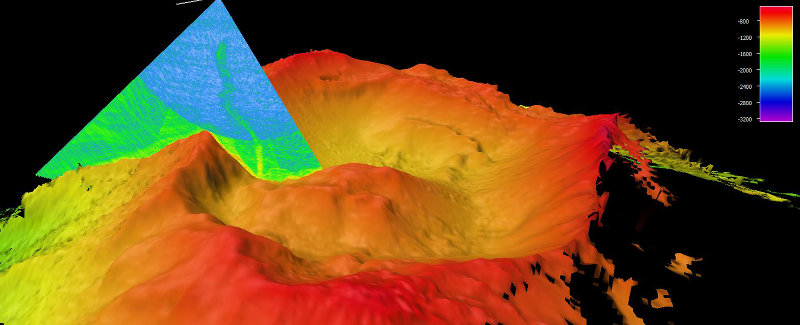
All Classroom Materials
In this investigation, students analyze chemical structures and make observations in order to develop and use a model to explain the phenomenon: How does methane hydrate form on and below the seafloor?
In this investigation, students analyze chemical structures and make observations in order to develop and use a model to explain the phenomenon: How does methane hydrate form on and below the seafloor?
In this investigation, students analyze chemical structures and make observations in order to develop and use a model to explain the phenomenon: How does methane hydrate form on and below the seafloor?
Despite existing in the depths of the ocean, where sunlight cannot reach, hydrothermal vents are oases of life in the deep. In this investigation, students explore the phenomenon: How can ecosystems survive without sunlight?
In this investigation, students analyze chemical structures and make observations in order to develop and use a model to explain the phenomenon: How does methane hydrate form on and below the seafloor?
During this investigation, students explore the phenomenon of light and color in the ocean through sense-making.
In this investigation, students analyze chemical structures and make observations in order to develop and use a model to explain the phenomenon: How does methane hydrate form on and below the seafloor?
In this investigation, students evaluate evidence and reasoning in order to construct an argument that supports a claim about the phenomenon: How do methane ice worms obtain organic compounds and energy while living on methane hydrate?
Students analyze data and various models to evaluate how well they represent patterns of ocean currents around seamounts and determine the effects these current flows have on productivity.
In this investigation, students analyze Hawaiian and Alaskan seamount/island chain maps and data tables, plus a demonstration to develop an explanation to the phenomenon: How do seamounts and island chains form in the middle of the ocean?
This investigation features data and images from deep-sea coral gardens that students will use to construct an explanation for the deep-sea phenomenon.
Students analyze and interpret data from the Million Mounds coral region, including currents and plankton movement.
During this investigation, students explore the phenomenon of light and color in the ocean through sense-making.
Students practice the engineering design process to develop a working manipulator arm for a Remotely Operated Vehicle (ROV).
Scientific Remotely Operated Vehicles (ROVs) are designed to overcome many challenges associated with deep-sea environments.
Students learn about the variety of underwater robots that are used for ocean exploration and the technical capabilities that differentiate them from one another.
Students explore how a solid forms from the mixing of two liquids and use the science ideas they develop to help explain how chimneys form at hydrothermal vents.
Despite existing in the depths of the ocean, where sunlight cannot reach, hydrothermal vents are oases of life in the deep. In this investigation, students explore the phenomenon: How can ecosystems survive without sunlight?
